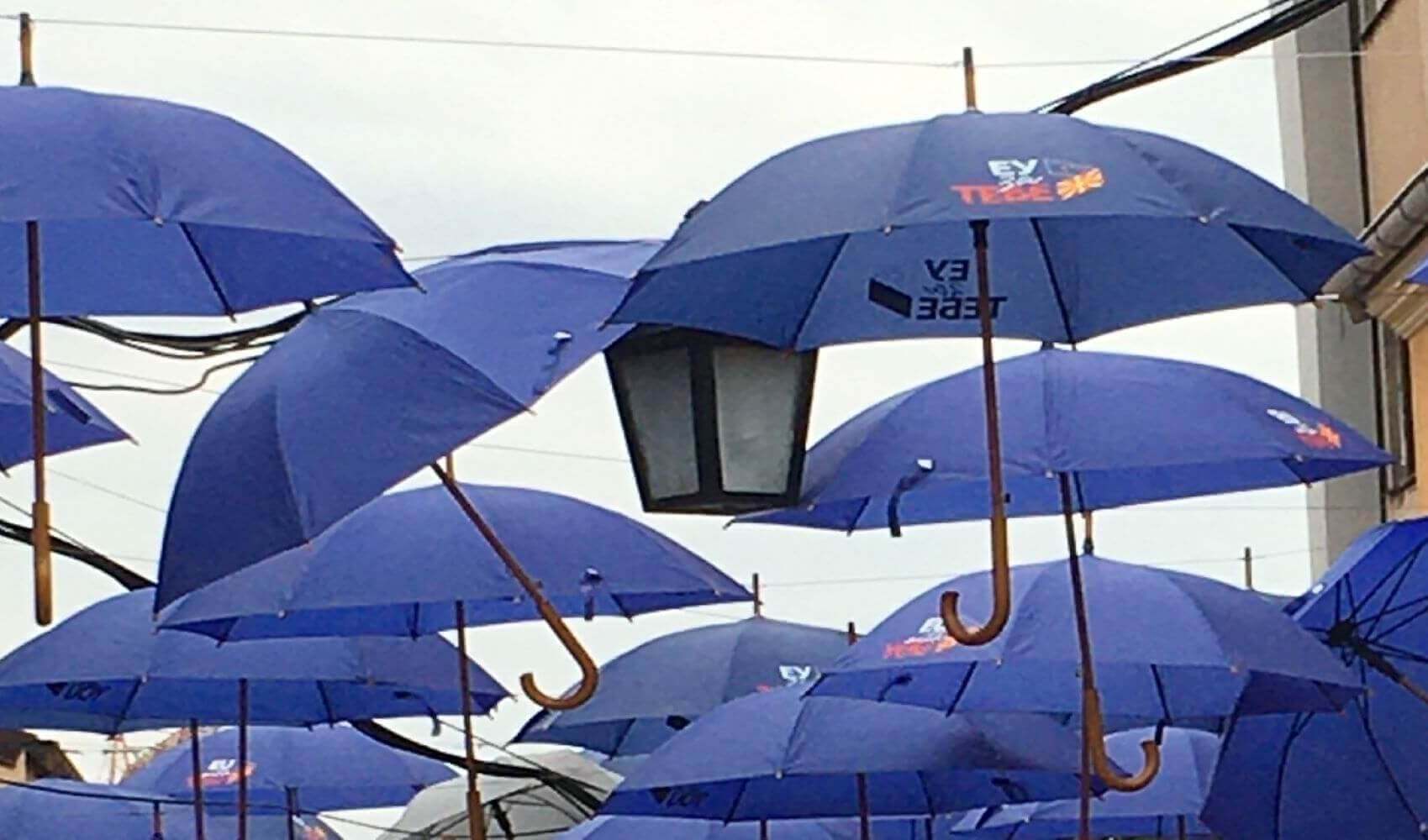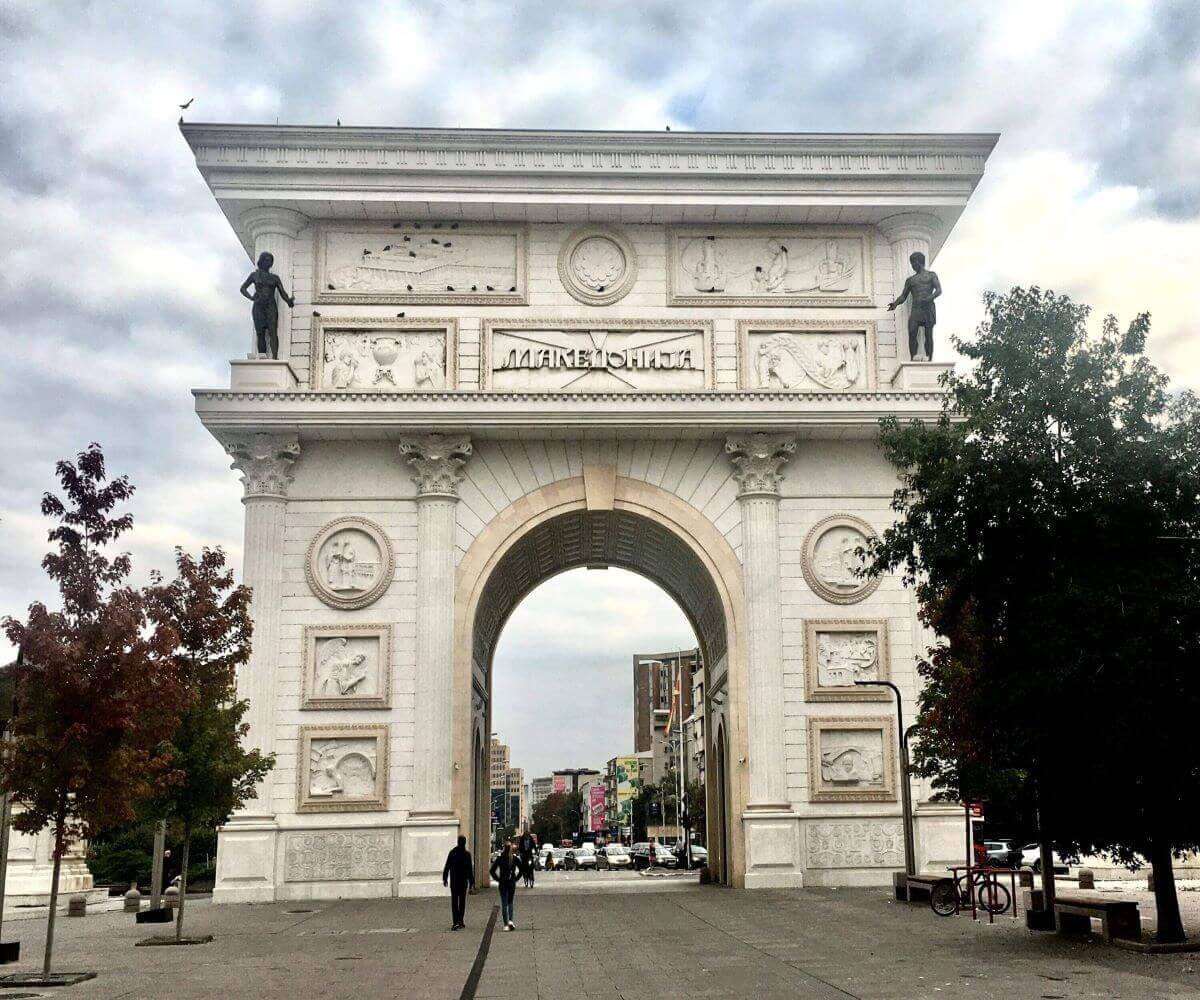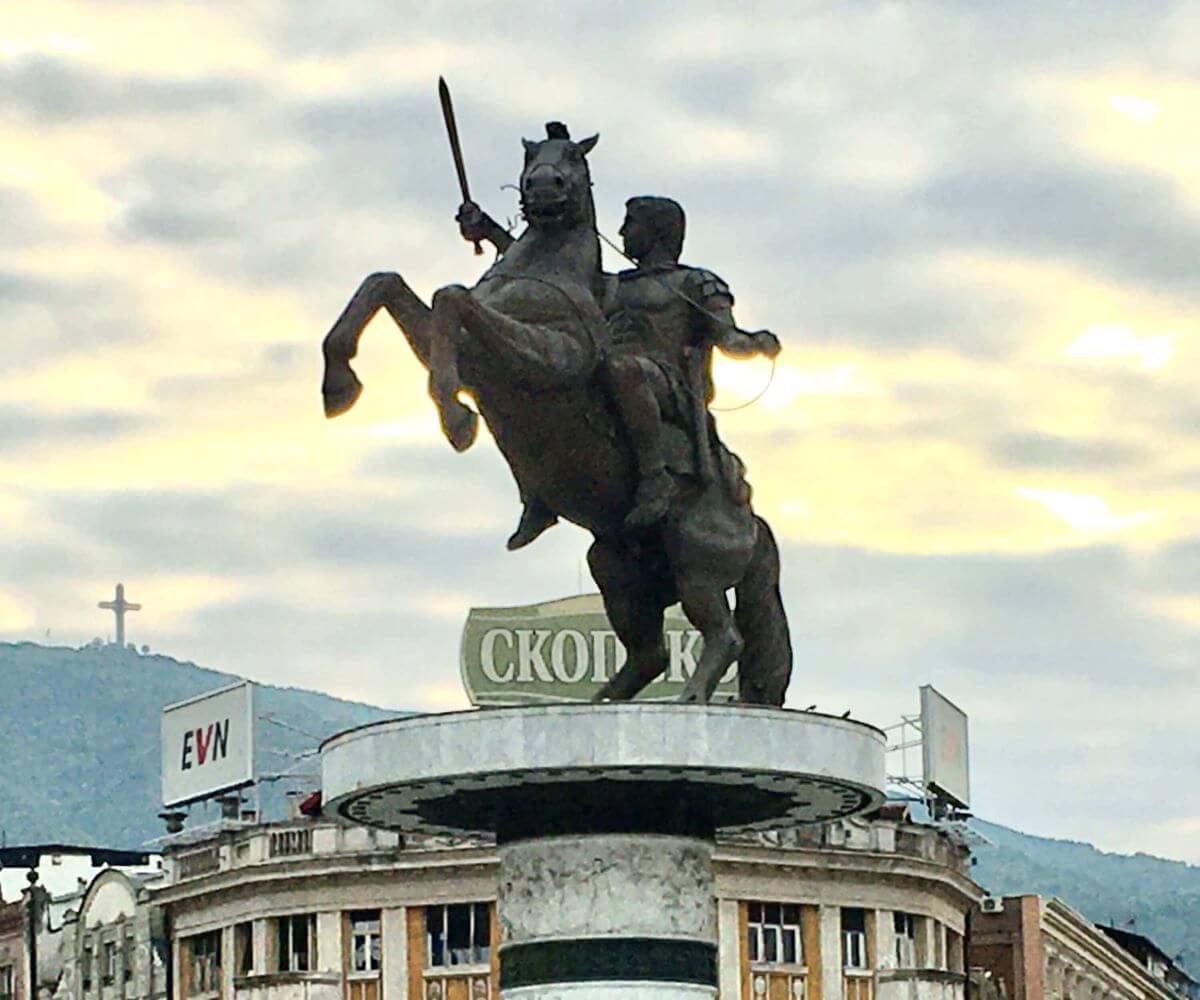
I travelled to Skopje in October 2021, en route from Serbia to Greece. Its old town has a large and quaint marketplace with an abundance of under-priced food, which makes it a very dangerous place to visit if you have any sort of sweet tooth. If I ever have the misfortune of getting diabetes, I am confident it will be the sole fault of the grotesque quantity of Baklavas I ate during these marvellous 24 hours. As I wandered the Old Town, I came across an interesting street shaded by rows of umbrellas (shown in the banner above). People often talk about public transportation, public healthcare, and public education, but this was the first time I had ever encountered public raingear. I hope that Western countries will soon adopt this brilliant Macedonian innovation. While in Skopje, I did not have the means to print out my passenger locator form, which was required to enter Greece. When the policewoman at the border crossing asked me for it, I awkwardly held up my computer to show her the PDF version, which prompted her to burst into giggles as she waved me through. Her reaction was a pleasant surprise, as in most other countries I have been to, any unorthodox documentation tends to be met with frowns and sarcastic comments about clueless foreigners.
Skopje (pronounced Skopya) is the capital city of North Macedonia (pronounced Makedonia). Its area has been inhabited by various tribes since 4000 BC, and during most of the common era the city was ruled by the Byzantine and Ottoman Empires. Skopje was severely damaged by a major earthquake in 1963, which killed over 1,000 people, and levelled many historic monuments. Its reconstruction largely followed the brutalist style of architecture, which prioritized cheap, simplistic designs of poured concrete in contrast to the ornate splendour of the earlier Baroque architecture. In 2010, the government announced a Skopje 2014 initiative, which led to the creation of a wide variety of more visually-appealing neoclassical statues and monuments throughout the city.

The broader region of Macedonia was ruled by the Ottoman Empire until 1913, when Bulgaria, Greece, Montenegro, and Serbia united to form the Balkan League, and defeated the Ottomans in the 1st Balkan War. Macedonia was then divided between Bulgaria, Greece, and Serbia. A new state, Albania, was created, and the province of Kosovo was given to Serbia. Bulgaria, dissatisfied with its territorial gains, attacked its former allies a month later, resulting in the 2nd Balkan War. Bulgaria's defeat in August 1913 left Macedonia divided into 2 regions: a Greek region, which remains a province of Greece today, and a Serbian region, which alongside Serbia and Montenegro would become part of the Kingdom of Yugoslavia in 1918. It remained part of Yugoslavia until 1991, when it conducted a referendum that overwhelmingly favored separation. It then gained its independence as the Republic of Macedonia.

Unlike its Balkan neighbors, the Republic of Macedonia's separation from Yugoslavia was relatively peaceful, although it was overwhelmed by hundreds of thousands of ethnically Albanian refugees during the 1999 Kosovo crisis. There have since been several incidents of inter-ethnic violence between the majority Macedonian and minority Albanian populations. The country has consistently had tense relations with Greece because of its name. Greece considers the residents of the Republic of Macedonia to be ethnically Slavic and not Macedonian, which in their minds should refer to the residents of the Greek province of Macedonia. Greece also accuses the Republic of Macedonia of appropriating symbols that are significant in Greek Macedonian culture such as the Vergina Sun, which appeared on the Republic of Macedonia's flag until 1995. In 2019, the Republic of Macedonia changed its name to the Republic of North Macedonia to placate Greece so that it could join NATO, which it did in 2020.
The Porta Macedonia, was constructed recently, in 2012, and specifically commemorates Macedonian independence from Yugoslavia in 1991. This monument was part of the Skopje 2014 project, which aimed to stimulate tourism to the country and to laud the nation's history - albeit at a large price tag in the hundreds of millions of euros. I can testify that the project was successful in that end - Skopje is one of the most interesting cities I have visited, and one of the most enjoyable to walk around. I also would not have guessed that it was ravaged by the 1963 earthquake, and only learned about this feature of the city's history when researching it after my visit.

It seems like every city in the Balkans boasts a large statue of Alexander the Great - and Skopje is no exception! Also built as part of Skopje 2014, this statue was perhaps the largest of all those I saw in the region. Cultural appropriation of Alexander the Great remains one of the largest points of contention between North Macedonia and Greece. In effect, Greece considers him to be ethnically Greek Macedonian, having been born in the Macedonian province of Greece. The statue is formally called "Warrior on a Horse," presumably to avoid antagonizing Greece. It should be noted that although Alexander the Great is positively portrayed in the Balkans and in Europe at large, he was called "Alexander the Accursed" in the Achaemenid Empire (now Persia) which he conquered.

Situated on the top of Vodno mountain, a large hill overlooking Skopje, the Millenium Cross was erected in 2002 to celebrate 2000 years of Christianity in the region. It is 66 meters tall - or roughly the height of 12 giraffes! Hiking to the top of Vodno mountain from the edge of Skopje took me about an hour, and involves an arduous but enjoyable hike up the hill's heavily forested slopes. The summit offers impressive views of Skopje and of the surrounding woods and towns. Similar to the Eiffel Tower in Paris, the steel cross has a grid-based design, and lights up at night. The cross was somewhat controversial because, although the project was primarily funded by the Orthodox Church, the government contributed towards its construction as well. This was seen as divisive towards the country's substantial Muslim minority population. As an outsider, I cannot comment on the political or religious implications of the cross, but I can testify that it is an impressive structure that is well worth the hike.
